Spanning the vast landscapes of the northern plains, North Dakota holds the rich tapestry of American history.
The historic forts in North Dakota, once the frontier bastions of the United States, narrate tales of pioneers, Native Americans, and the U.S. military’s role in shaping the westward expansion.
In this article, we dive deep into the stories these forts offer, echoing tales from bygone eras and forging connections between past and present.
10 Historic Forts in North Dakota
| 1. Fort Abercrombie (1858-1878) | 6. Fort Rice (1864-1878) |
| 2. Fort Totten (1867-1890) | 7. Fort Berthold (1845) |
| 3. Fort Buford (1866-1895) | 8. Fort Mandan (1804-1805) |
| 4. Fort Stevenson (1867-1883) | 9. Fort Seward (1872) |
| 5. Fort Abraham Lincoln (1872-1891) | 10. Fort Pembina (1870-1895) |
1. Fort Abercrombie (1858-1878)
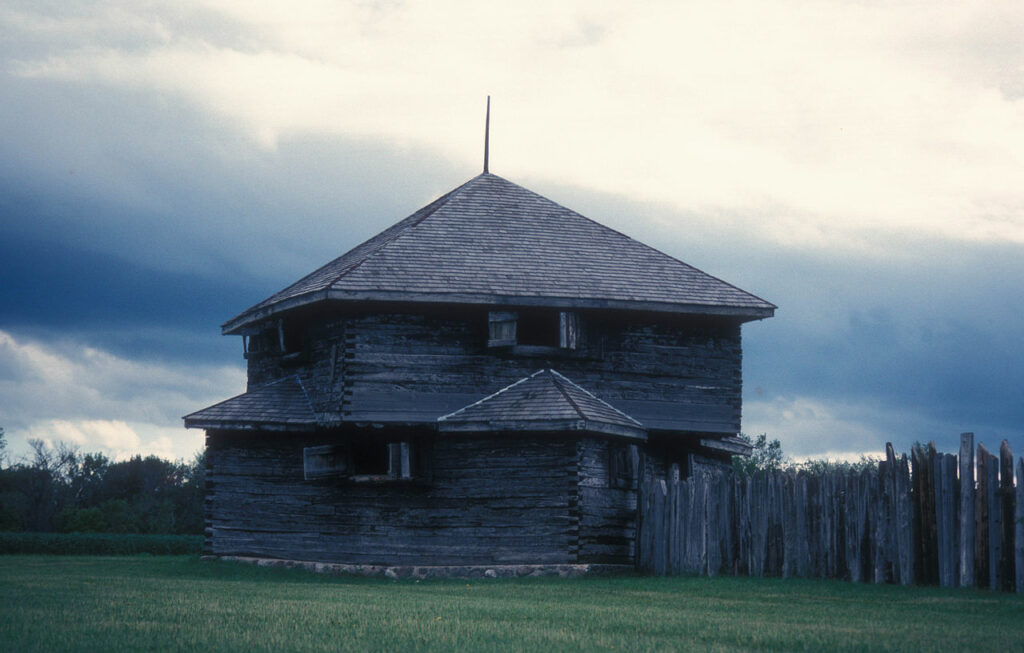
Located near the Red River and Minnesota River meeting point, Fort Abercrombie’s strategic location was emblematic of its vital role during the mid to late 19th century. This era marked a time of westward expansion and intricate relations between the United States and Native American tribes.
Historical Role
Fort Abercrombie is the inaugural United States military fortification in the territory that would evolve into North Dakota. Established with a dual purpose, it provided critical protection to oxcart trails, facilitating the smooth transit of goods and settlers, safeguarding pivotal mail routes, and maintaining crucial communication lines.
Its resilience during the US-Dakota War of 1862 highlighted its importance. The war, a conflict between the United States and several Dakota (Sioux) bands, saw the fort stand undaunted during multiple sieges, symbolizing safety and shelter for settlers and soldiers alike.
Following this tumultuous period, the fort’s significance was further underscored by the marked increase in wagon train activity it observed, reflecting the broader migratory patterns of the era.
Today’s Tribute to History
While the echoes of military drills and the bustle of soldiers have long faded, Fort Abercrombie remains a vibrant reflection of frontier challenges and victories. Present-day visitors can traverse its historical pathways, with the fort’s original structures providing an authentic backdrop.
The visitor center, a treasure trove of the past, presents a rich tapestry of artifacts, each narrating its tale from the fort’s heyday.
The center is not just a silent observer of history; it actively engages with the public through various educational programs, illuminating the fort’s legacy, the lives it touched, and its undeniable imprint on the canvas of American westward expansion.
2. Fort Totten (1867-1890)
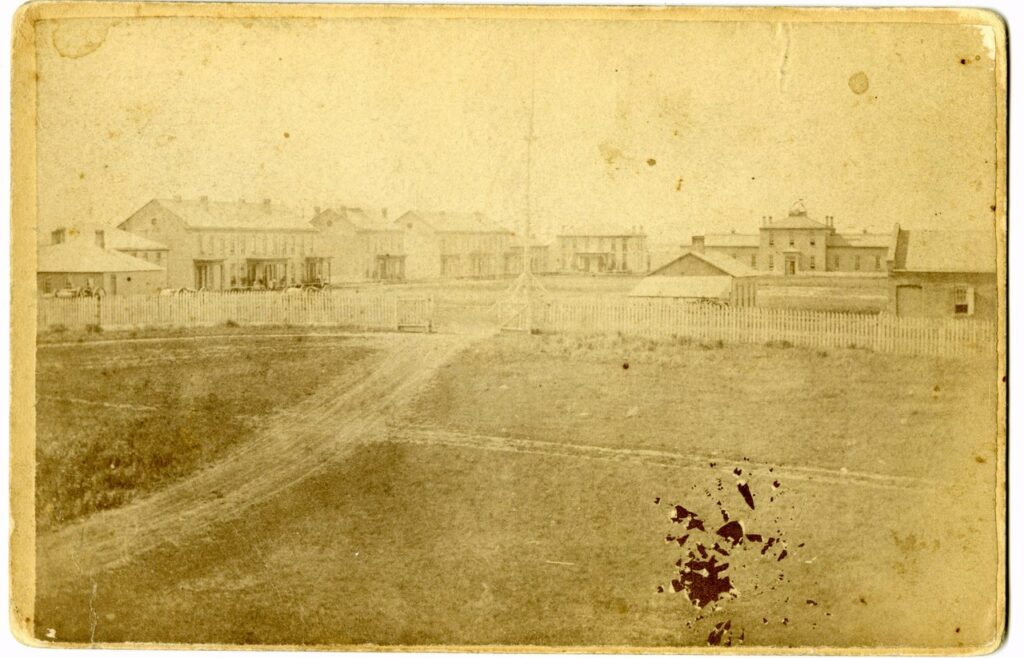
Perched near the scenic backdrop of Devils Lake, Fort Totten emerged in 1867 and played diverse roles over the years, transitioning from a robust military fort to an influential boarding school. Its legacy stretches beyond its military years, shaping the cultural and educational landscape of the eastern Dakotas.
Sioux Uprising (1862)
Even though Fort Totten was established in 1867, its inception was closely linked with the aftermath of the Sioux Uprising in 1862. This revolt was a fierce conflict between the United States and several bands of the Dakota (Sioux) nation.
While the uprising occurred before the fort’s establishment, the subsequent years saw its active involvement in maintaining peace and order in the aftermath of the rebellion. The fort was pivotal in the military’s efforts to maintain peace and order in the region, ensuring tensions did not flare up again.
Transition to Boarding School (Post 1890)
After its decommission in 1890, Fort Totten underwent a remarkable transition, evolving into a boarding school. This school played a significant part in the education and assimilation policies of the time, often influencing Native American children’s lives.
The intention was to assimilate Native American youth into mainstream American culture, which, in hindsight, had complex and lasting implications for the indigenous communities.
Fort Totten Today
The Fort Totten State Historic Site is a monument to this establishment’s multifaceted roles. One of the prominent highlights is the well-preserved original officers’ quarters, providing a tangible link to the past.
Through curated exhibits and interpretative displays, visitors are granted a window into the fort’s military activities, connection to the Sioux Uprising, and later transformation into a boarding school.
3. Fort Buford (1866-1895)
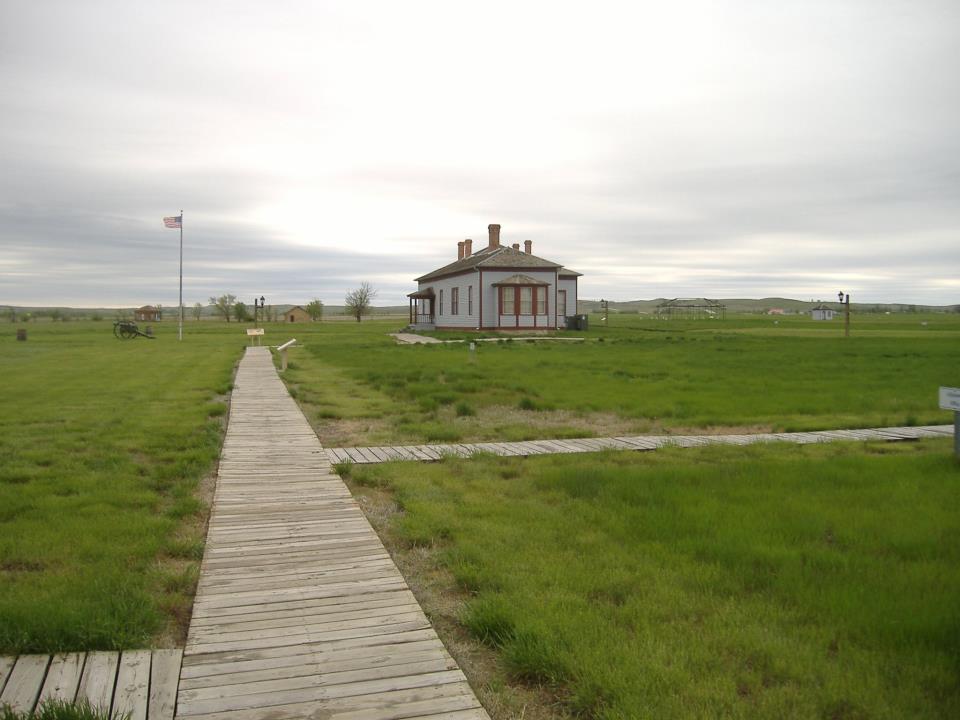
Positioned close to the Yellowstone River, Fort Buford was established in 1866 and soon became a cornerstone in the history of the Northern Plains. Its prime location allowed it to act as a critical junction, interfacing with various facets of the American frontier.
Surrender of Sitting Bull (1881)
One of the most pivotal moments in Fort Buford’s history was the surrender of the legendary Hunkpapa Lakota leader, Sitting Bull, in 1881.
Known for his defiance of U.S. government policies and his crucial role in the Battle of Little Bighorn, Sitting Bull’s surrender marked a significant turning point in the Indian Wars. It symbolized the broader subjugation of Native American tribes during this period.
Supply Depot Function
Beyond its military operations, Fort Buford became crucial for westward expansion, serving as a supply depot for forts situated further west. This role ensured that these frontier outposts remained adequately provisioned, playing a central part in the U.S. Army’s efforts to extend its influence and control over the vast western territories.
Cultural Intersection
Given its importance, Fort Buford naturally became a focal point for various individuals—soldiers, fur traders, and Native Americans. This mix fostered a unique cultural and economic exchange, turning the fort into more than just a military post. It became a hub of interactions, negotiations, and sometimes, conflicts.
Fort Buford Today
Currently recognized in the National Register of Historic Places, Fort Buford is a testament to a turbulent era. Visitors to the site are treated to an immersive experience that encapsulates the lives of those who once walked its grounds.
Through meticulous preservation, the fort offers insight into the everyday lives of soldiers stationed there, the fur traders who frequented it seeking opportunities, and the Native Americans whose fates were irrevocably intertwined with its existence.
4. Fort Stevenson (1867-1883)
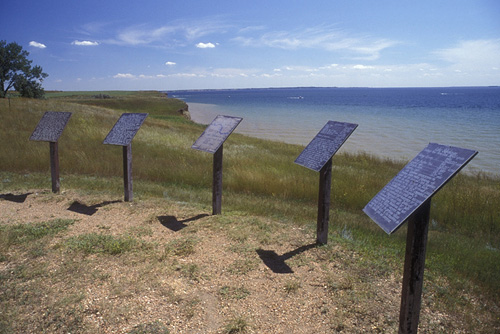
Founded in 1867, Fort Stevenson was strategically positioned to play a unique role in the tapestry of frontier history.
Though the specific location isn’t mentioned in the given details, it can be inferred that like many other forts of its era, it was designed to support westward expansion, protect vital routes, and serve as a stronghold in interactions with Native American tribes.
Strategic Military Position
Forts during this time frame were primarily established as military outposts, providing security to settlers, and ensuring safe transportation and communication lines. Fort Stevenson would have been instrumental in asserting U.S. military presence and dominance in the region.
Trade and Commerce Hub
Many forts during this period also became significant nodes for trade and commerce. Given its existence in the late 19th century, Fort Stevenson likely witnessed the comings and goings of fur traders, merchants, and settlers looking for opportunities in the West.
Cultural Confluence
As with other forts, Fort Stevenson would have been a site of interactions between military personnel and indigenous tribes. Such encounters could range from peaceful negotiations to potential conflicts, each leaving its mark on the fort’s history.
Legacy and Preservation
While details about Fort Stevenson’s current status weren’t provided, forts of such historical significance often find their way into preservation efforts.
Whether through direct restoration of buildings, curated exhibits, or educational programs, sites like Fort Stevenson typically offer contemporary visitors insights into frontier life, military operations, and the nuanced relationships between settlers and Native American communities.
5. Fort Abraham Lincoln (1872-1891)
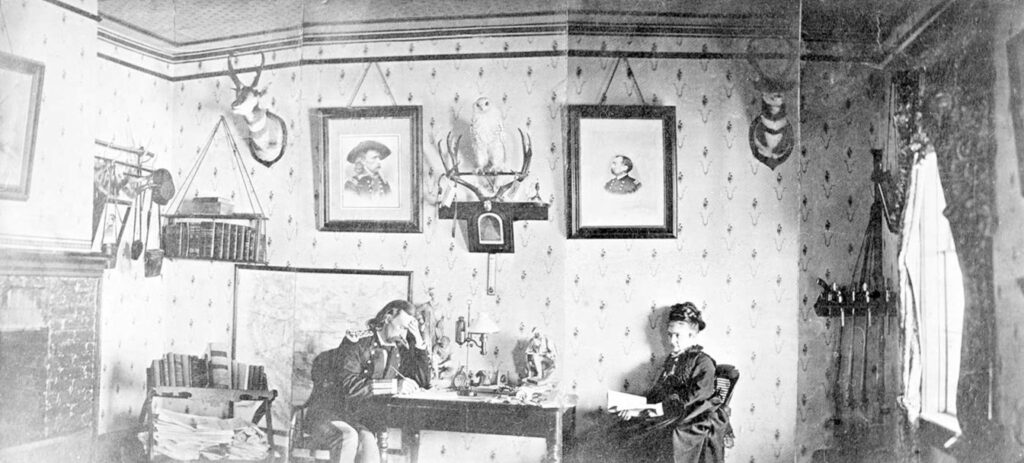
Called initially Fort McKeen, Fort Abraham Lincoln, erected in 1872, was another pivotal installment in the matrix of military outposts designed to enforce U.S. dominance and facilitate westward expansion during the latter half of the 19th century.
Military Operations
As with most forts of this era, Fort Lincoln would have been a crucial military base. From housing troops to overseeing regional operations, the fort would have played a role in maintaining the security of settlers, trade routes, and the surrounding territory.
Custer’s Expedition and the Great Sioux War
Fort Lincoln is historically significant because of its association with Lieutenant Colonel George Armstrong Custer. It served as the departure point for Custer’s ill-fated 1876 expedition against the Lakota Sioux and Northern Cheyenne, culminating in the Battle of the Little Bighorn, where Custer and many of his men met their end.
This event was a significant episode in the Great Sioux War (1876-1877), marking a peak in conflicts between the U.S. government and Native American tribes of the Plains.
Trade and Settlement Facilitation
Beyond its military role, Fort Lincoln likely acted as a hub facilitating trade and aiding settlers. Its presence would have reassured those seeking new opportunities in the West, and it might have seen interactions with traders, explorers, and pioneers passing through.
Fort Abraham Lincoln State Park
Though its active military role concluded in 1891, Fort Lincoln’s historical weight ensures it is remembered. The fort’s association with significant events, notably the Battle of the Little Bighorn, ensures its place in American history.
Preserved forts from this era often offer insights through restored structures, exhibits, and educational programs that detail the complexities of frontier life, the challenges faced by the military, and the intricate dynamics between settlers and indigenous tribes.
6. Fort Rice (1864-1878)
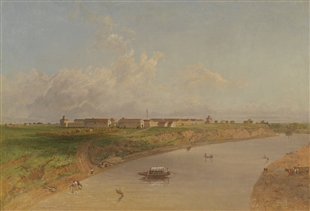
Established in 1864, Fort Rice was situated in North Dakota. Like many military installations of the time, its primary purpose was to protect overland and river routes used by settlers and traders, ensuring the westward expansion of the United States.
Dakota Wars Aftermath
Fort Rice was founded after the Dakota War (or Sioux Uprising) of 1862. The military aimed to establish a more substantial presence in the region to protect settlers and ensure peace following the conflict with the Dakota Sioux in Minnesota. Its establishment was part of broader U.S. strategies to control the territory and its indigenous inhabitants.
Peacekeeping and Treaties
Fort Rice was pivotal in peacekeeping missions and treaty negotiations with various Native American tribes. In 1868, the fort was a significant site for gatherings between U.S. officials and tribal leaders, culminating in signing treaties, such as parts of the Fort Laramie Treaty.
These treaties were intended to establish peace, but they also often resulted in the displacement and dispossession of Native tribes.
Positioned near the Missouri River, Fort Rice was a guardian for overland and river routes, vital for commerce, communication, and transportation during westward expansion.
By the time it was decommissioned in 1878, Fort Rice had seen over a decade of service during significant change and tension on the American frontier.
While the fort has primarily returned to the earth, with few original structures remaining, its legacy persists. Even in their relics, sites like Fort Rice serve as crucial reminders of the intricate dynamics of expansion, military campaigns, and the profound impacts on Native American tribes during the 19th century.
7. Fort Berthold (1845)
Fort Berthold holds a significant place in the history of the upper Missouri River, situated in what we know today as central-northwest North Dakota. Its foundations lie in the fur trade, an industry that played a pivotal role in the westward expansion and development of the United States.
The fort wasn’t just a single establishment but consisted of two sequential outposts, which initially functioned as fur trading posts. Over time, the second evolved to serve the U.S. Army.
Once the military had established control over the region and diminished Native American resistance, the fort was repurposed. It became the U.S. Indian Agency designated for the Arikara, Hidatsa, and Mandan Affiliated Tribes, serving as a base for their reservation.
The Man Behind the Name
The name ‘Berthold’ pays homage to Bartholomew Berthold, an Italian-born merchant who carved a niche in the fur trade. Born in 1780 and living until 1831, Berthold was a significant figure in St. Louis, where he became a prominent merchant and fur trader.
His business acumen and partnerships were notable, as he collaborated with well-known trading families, including the Chouteaus and Astors. These collaborations enhanced the fur trade in the region, connecting it with broader networks and ensuring its profitability and reach.
In St. Louis, Berthold’s legacy was further cemented with the construction of the Berthold Mansion at what is now known as Broadway and Pine Streets.
Over the decades, this impressive tower played various roles, from housing the Democratic Party’s headquarters to serving as a rallying point for pro-Southern secessionists known as the Minute Men post Abraham Lincoln’s 1860 election.
Fate of the Fort
A significant shift came in the mid-20th century when both the historic sites of Fort Berthold were submerged. The creation of Lake Sakakawea, a result of the Garrison Dam’s construction on the Missouri River, inundated these once-bustling trade outposts.
However, the memory of Fort Berthold and its namesake, Bartholomew Berthold, remains, serving as a testament to the dynamic and multi-faceted history of the region.
8. Fort Mandan (1804-1805)
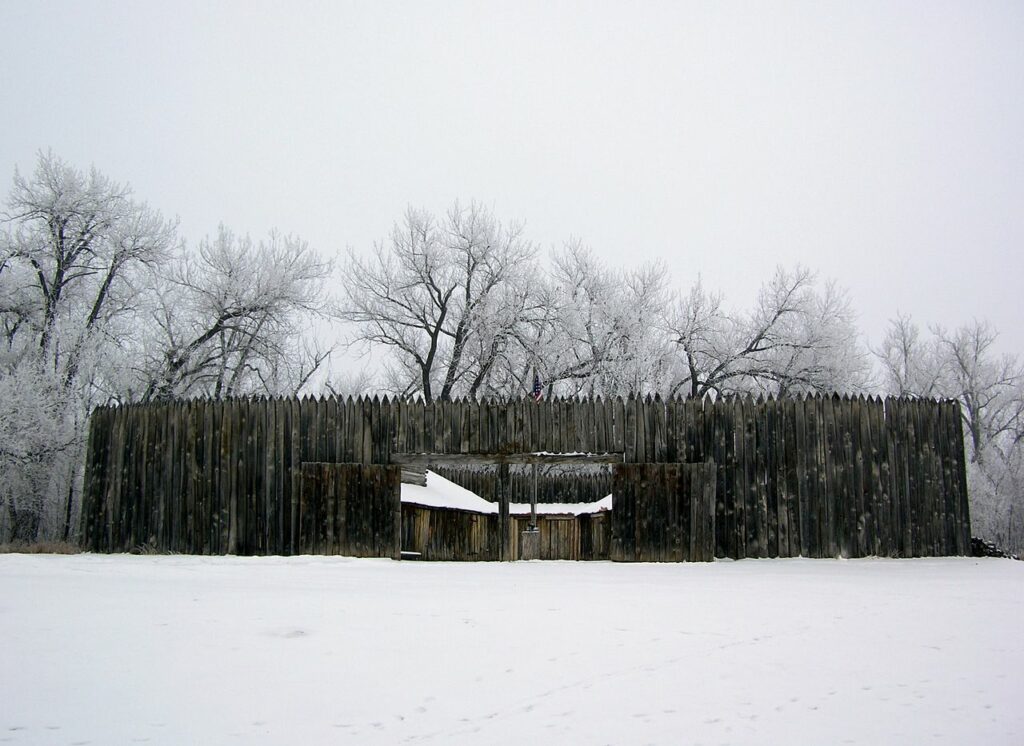
Fort Mandan holds a distinct place in the chronicles of American history, particularly within the context of the renowned Lewis and Clark Expedition. Located along the Missouri River in what is today North Dakota, Fort Mandan was constructed in the winter of 1804-1805.
The Corps of Discovery, led by Captains Meriwether Lewis and William Clark, needed a winter encampment, and the site near the Mandan and Hidatsa Native American villages was chosen for its strategic value.
Interaction with the Mandan Tribe
The fort’s name, “Mandan,” pays tribute to the Mandan tribe, indigenous people who lived in earth lodges in the region. The winter spent at Fort Mandan was crucial for the Lewis and Clark Expedition in multiple ways.
It offered a chance for the team to rest and resupply and fostered a period of interaction and trade with the Mandan and nearby Hidatsa tribes. The tribes provided the expedition with essential supplies and information that would prove invaluable for the next phase of their journey.
During their stay, Lewis and Clark met Toussaint Charbonneau, a French-Canadian trapper, and his Shoshone wife, Sacagawea. Sacagawea would later become an indispensable expedition member, interpreter, and mediator with various indigenous tribes.
Legacy and Preservation
The spring of 1805 saw the expedition pack up and head westward from Fort Mandan, journeying toward the Pacific Coast. While the fort served its purpose and was left behind, its significance wasn’t forgotten.
Unfortunately, the river claimed the original fort due to erosion in subsequent years. However, recognizing its importance in U.S. history, a replica of Fort Mandan was constructed nearby.
Today, it stands as a testament to the endeavors of the Lewis and Clark Expedition and the cooperative spirit of the early 19th-century exploration. Visitors to the site can step back in time and get a sense of the challenges and triumphs the Corps of Discovery faced during that formative winter.
9. Fort Seward (1872)
Fort Seward was situated on a hill overlooking the James River and Pipestem Creek confluence in Jamestown, North Dakota, in the post-Civil War era.
As the westward expansion accelerated, the U.S. military deemed it essential to have forts to safeguard settlers from potential conflicts with Native American tribes and offer a stable environment for communities to grow. In this context, Fort Seward was founded in 1872.
Role and Significance
Unlike other forts that saw significant battles or interactions with Native American tribes, Fort Seward’s presence was more of a deterrent. Its strategic location allowed it to oversee a vast region, providing a sense of security to settlers.
While large-scale conflicts did not erupt around the fort, its garrison played a critical role in maintaining order and helping build the foundation for Jamestown and other surrounding communities.
Decommissioning and Legacy
The importance of Fort Seward waned as the frontier became more settled and the perceived threat of conflict decreased. The fort was decommissioned by 1877, just five years after its establishment. Most of its buildings were dismantled or sold, and the land was repurposed.
However, the memory of Fort Seward did not fade entirely. Recognizing its historical importance, local initiatives led to the establishment a park on the fort’s original site.
Today, Fort Seward Park includes an interpretive center, a large wagon wheel that commemorates the prairie schooners of pioneers, and an annual rendezvous that celebrates the area’s history.
10. Fort Pembina (1870-1895)

In present-day North Dakota, once part of the Dakota Territory, Fort Pembina was strategically positioned near the Red and Pembina Rivers confluence at the United States and Canada border.
Established in 1870, its primary mission was to curb the illegal trade and smuggling activities rife along the border. The fort also played a crucial role in managing relations with the local Métis population. It protected against potential tensions with Canada during evolving boundary definitions.
Operational Significance
Fort Pembina was more than just a military outpost; it was a hub of activity and a beacon of federal presence in a remote region.
Given its proximity to the international boundary, the fort often found itself involved in customs and border enforcement duties. The soldiers there patrolled the border, inspected goods, and ensured that activities like whiskey trading were curtailed.
Moreover, with the periodic unrest in the Red River Colony to the north, especially during the Red River Rebellion of 1869-1870, the presence of Fort Pembina was seen as a stabilizing factor. It acted as a deterrent against any spillover of conflict into American territory.
Closure and Legacy
Fort Pembina’s operational life ended in 1895, when the region had become more settled, and the need for a military presence had significantly diminished. The fort’s structures were largely disassembled, and over time, the physical presence of the fort faded from the landscape.
However, its historical significance remains intact. Today, the memory of Fort Pembina is preserved through local historical societies, markers, and commemorative events. The fort is a testament to the challenges of frontier life, border dynamics, and the ever-evolving nature of international relations during the latter half of the 19th century.
Related: 10 Historic Forts in South Dakota
Conclusion – Historic Forts in North Dakota
The historic forts of North Dakota serve as enduring monuments to a time of exploration, conflict, and nation-building. As we trace the footsteps of pioneers, soldiers, and Native Americans through these silent stone sentinels, we are reminded of the intricate dance of cultures, ambitions, and aspirations that shaped the Northern Plains.
They are relics of the past and powerful reminders of our nation’s journey and evolution. As we gaze upon the walls and ramparts of these historical sites, it is our privilege and responsibility to remember, cherish, and share the tales they safeguard, ensuring that the legacy of North Dakota’s historic forts remains alive for generations.
Although most of the original buildings of these forts no longer exist, we still can appreciate their legacy and enjoy the forts that have been reconstructed.
If you have visited any of these forts, we would love to hear about your experience in the comments section below.

Cory is a website owner and content creator who enjoys fishing, history, coin collecting, and sports, among other hobbies. He is a husband and father of four.
Romans 15:4 For whatever was written in former days was written for our instruction, that through endurance and through the encouragement of the Scriptures we might have hope.

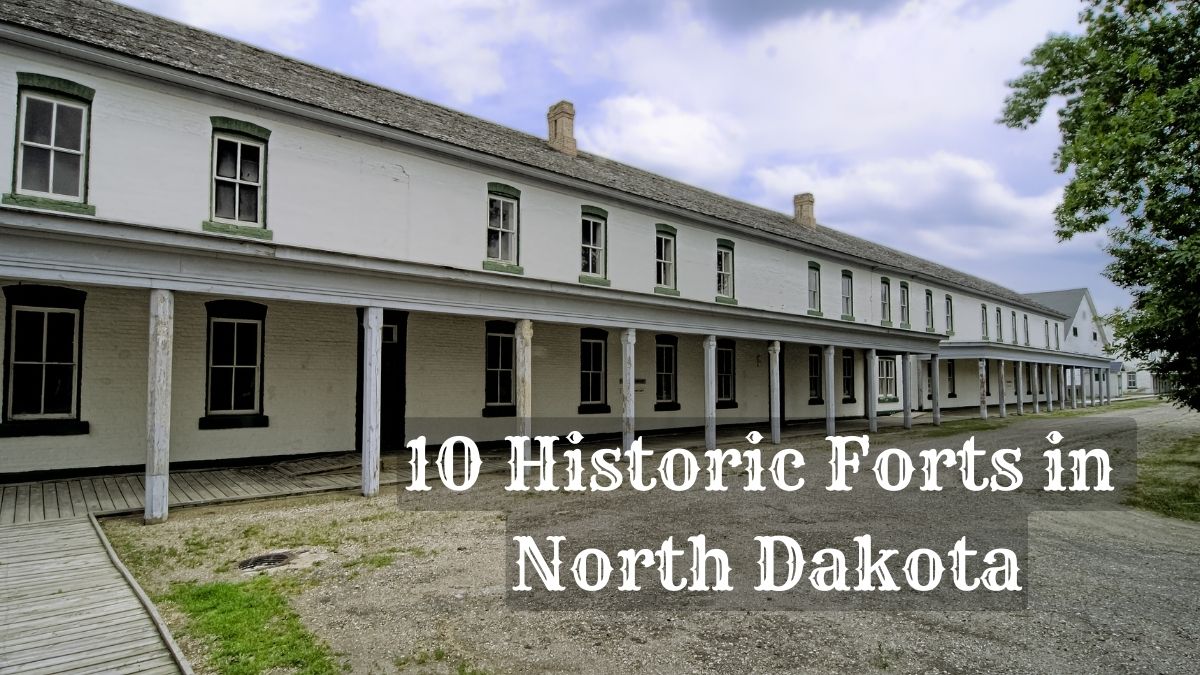
Stumbled onto this whole doing research. Love the scripture brother, God bless you.
God bless you as well Brian!